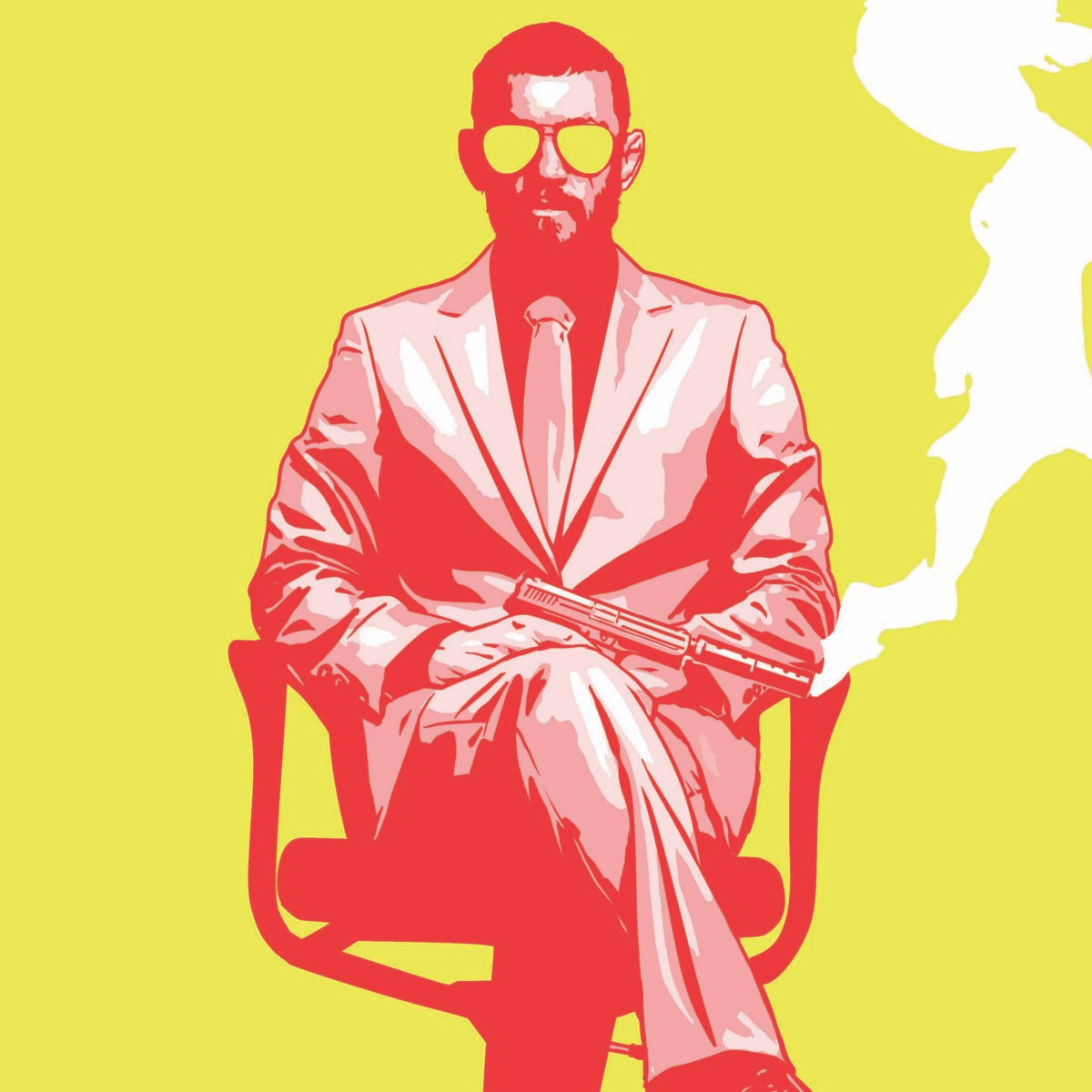The near future. Ultra-powerful corporations wage a shadow war for control of the world. Governments as we know them have been reduced to pitiful shells, law enforcement agencies serve at the pleasure of private operators and the weaponization of science has given rise to new ways to maim people’s souls in the service of making them murderers. One particularly popular modification? Augmenting someone’s mind to the point that their empathy becomes a weapon.
Those who’ve been through this procedure need only a sample of their target’s DNA – a drop of blood, saliva left on a fork, even some dandruff – to dive into their minds and learn not only how they think, but why they think that way. And when you know someone so thoroughly that you might as well be them, killing them is just a matter of caution, skill, and will.
There is a man who has been through this procedure, a man who can lay claim to being one of the world’s greatest assassins. Once, he served the conglomerate called LINCOLN’S EYE. Now he serves no one but himself. He is a ronin. And he will have his revenge on those who made him what he is.
But LINCOLN’S EYE does not take kindly to being opposed, and the Ronin was far from the only person they remade. As the Ronin moves against LINCOLN’S EYE, LINCOLN’S EYE will move against him in turn. To be free of his meddling, they will set loose one of their most disturbing agents – the nightmare-walking serial killer called known only as Incubus.

AWA Studios
American Ronin is an impeccably crafted near-future tech thriller that is let down by its details. Artist ACO (Midnighter)’s illustrations and layouts are gorgeous, and his depictions of the Ronin and the Incubus are a superb integration of narrative text into visual form. Both men have been somewhat… hollowed out by the procedures that granted them their extraordinary abilities. Thus, ACO renders them in shadow or at angles. Rarely is either man fully visible on panel, and even their more direct appearance, like above, contain a hint of the abstract.
The ronin is not quite a ghost, the Incubus is not quite a demon, but both men stand a little bit apart from their fellow humans. And they take full advantage of that gap as they ply their trades. As infiltrators, they’re mutable and only as memorable as they need to be. As killers – the Ronin a fighter and the Incubus a torturer, they’re force personified. ACO’s action – and thus his cast’s actions are quick, pointed, and merciless.
Colorist Dean White and inker David Lorenzo’s work is essential to American Ronin‘s success. They build the book’s sweltering mood through long days and brutal nights and play a key role in crafting both the Ronin and the Incubus’ eeriness through their association with a dominant color. For the Ronin, it’s the deep orange of his signature sunglasses – they bury the man behind the assassin even deeper than the shadows. For the incubus, it’s the chalk-white of his skin – the skin of someone who almost never sees the sun because his handlers fear to let him run loose.
Sadly, Peter Milligan‘s script does not match his collaborators’ illustrations, colors, and inks. The Ronin’s outline is solid, but he never develops much beyond that outline. On some level, this is intentional – the Ronin, after all, takes on the traits of other characters in the course of his work. But his character development is thin enough that we mostly learn about his methodology and process, and then the act of them rather than his relationship to them.
Similarly, the Incubus is unsettling and terrifying and, well, that’s really it. There’s a shade more complexity to him given that he was deliberately molded into his current monstrous state, but neither he nor the Ronin is a particularly strong character. And given that they’re unquestionably the most dynamic, layered characters in American Ronin, that’s a problem.
That nebulousness is present in the rest of American Ronin as well. LINCOLN’S EYE has no goal beyond power. The same is true of its rivals. While that’s accurate to the way power-hungry organizations work, LINCOLN’S EYE has no language of its own, no credo or history. It just is. The silent war it wages with its rival is fragmented past the point of obscurity – it has no sense of scale or stakes.
Indeed, American Ronin‘s flimsiness extends to the title. The Ronin’s nationality is of no importance to him, nor is it important to the story. However late-capitalist America may have shaped the Ronin as a person outside of the literal shaping done by LINCOLN’S EYE, it is not explored in the book. Likewise, the title of Ronin has only superficial meaning at best. Was it assigned to him by LINCOLN’S EYE after his defection? Did he choose it himself because he felt an affinity to the masterless samurai of old? Is he a big John Frankenheimer or Frank Miller fan?
American Ronin‘s illustrations are gorgeous, and its action sequences are strong. The core ideas are interesting. But its script is too thin and too scattered for me to recommend it. If hard-hitting comics about the search for humanity amidst more-than-human augmentation and merciless corporate warfare are your speed, check out Alex de Campi, Duncan Jones and company’s Madi: Once Upon a Time in the Future.
Join the AIPT Patreon
Want to take our relationship to the next level? Become a patron today to gain access to exclusive perks, such as:
- ❌ Remove all ads on the website
- 💬 Join our Discord community, where we chat about the latest news and releases from everything we cover on AIPT
- 📗 Access to our monthly book club
- 📦 Get a physical trade paperback shipped to you every month
- 💥 And more!














You must be logged in to post a comment.